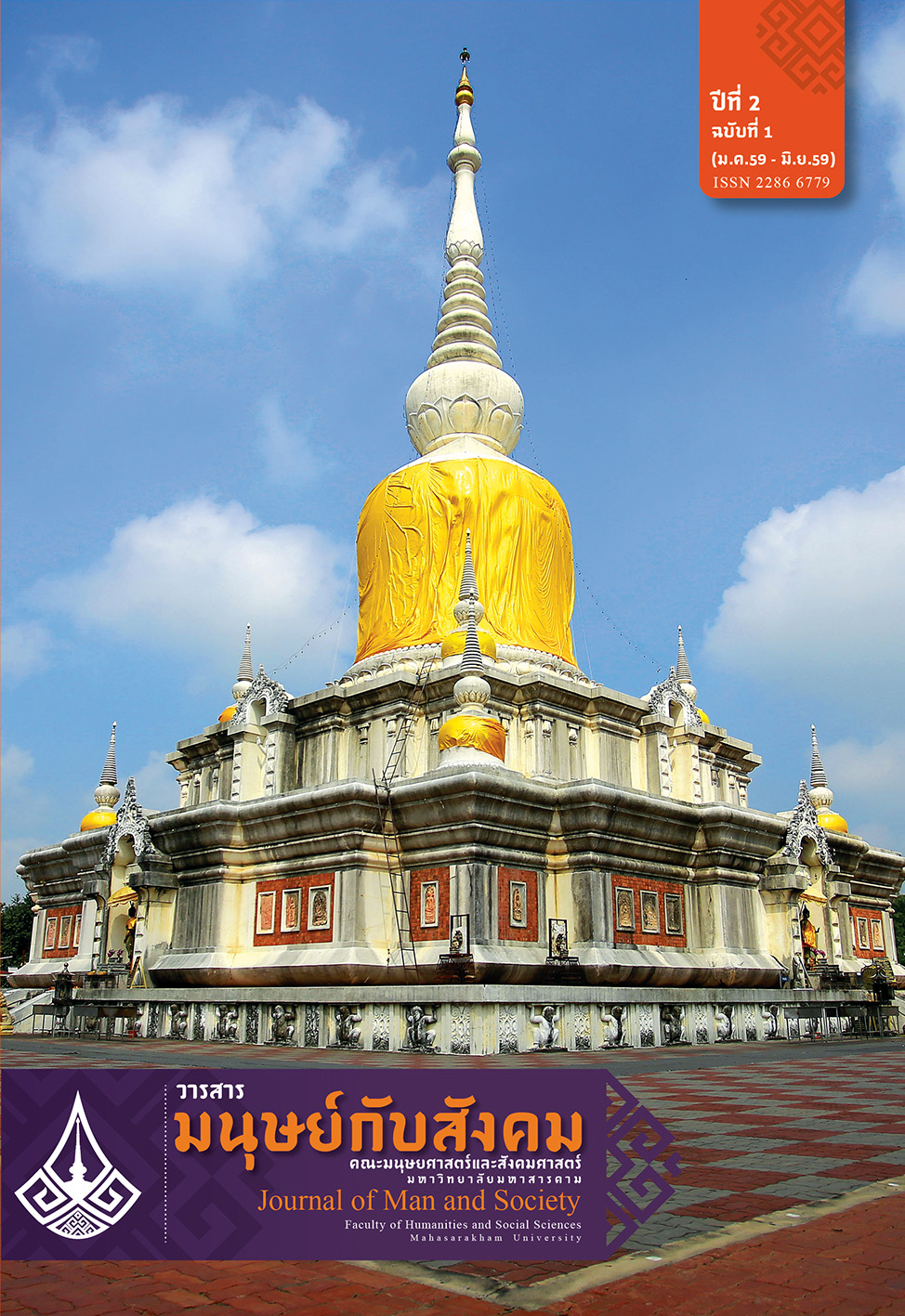Strategies of Marginal People Responses in Short Stories of The Naiin Award
Main Article Content
Abstract
This research article is aimed to study Isan characters and marginal people responses in short stories of the Naiin award in order to visualize the methods that Isan characters respond marginal people and to study author’s techniques of marginal people responses.
The results of the study of Isan characters and marginal people responses revealed as follow: 1) Isan characters in short stories of the Naiin award were ambitious to study in higher education to have a good career so that they could raise their family well and avoid to be employed as a cheap labour. 2) Isan characters had created their meanings to struggle with state power and created new meanings of urbanization and ruralization. Isan characters rejected the capital and realized to accept the value of rural because the gorgeous society was a dream. The results of author’s techniques of marginal people responses revealed as follow: 1) Responses through violent, ironic, and sarcastic description or conversation with hurtful and waspish tone. 2) Responses through gentle and compromising description or conversation with sympathetic tone. As the results, two methods of marginal people responses were different. However, marginal people responses of Isan people were serious and sincere.
Article Details

This work is licensed under a Creative Commons Attribution-NonCommercial-NoDerivatives 4.0 International License.
เนื้อหาและข้อมูลที่ตีพิมพ์ลงในวารสารมนุษย์กับสังคม ถือเป็นข้อคิดเห็นและความรับผิดชอบโดยตรงของผู้เขียนซึ่งกองบรรณาธิการวารสารไม่จำเป็นต้องเห็นด้วยหรือร่วมรับผิดชอบใดๆ
บทความ ข้อมูล เนื้อหา รูปภาพ ฯลฯ ที่ได้รับการตีพิมพ์ในวารสารมนุษย์กับสังคม ถือเป็นลิขสิทธิ์ของวารสาร หากบุคคลหรือหน่วยงานใดต้องการนำทั้งหมดหรือส่วนหนึ่งส่วนใดไปเผยแพร่ต่อต้องอ้างอิงวาสาร
References
กิติวัฒน์ตันทะนันท์. (2553). บ้านสัตว์เลี้ยง. กรุงเทพฯ: อมรินทร์พริ้นติ้งแอนด์พับลิชชิ่ง.
จุฑามณี สมบูรณ์สุทธิ์. (2546). หญิงชรา ความจน คนชายขอบ: ชีวิตริมฟุตบาทของหญิงชราขอทาน. วิทยานิพนธ์หลักสูตรศิลปศาสตรมหาบัณฑิต มหาวิทยาลัยธรรมศาสตร์.
ชูศักดิ์ วิทยาภัค. (2541). สังคมศาสตร์กับการศึกษาคนชายขอบ. วารสารสังคมศาสตร์, มหาวิทยาลัยเชียงใหม่.
นทธีศศิวิมล. (2551). ดอยรวก. กรุงเทพฯ: อมรินทร์พริ้นติ้งแอนด์พับลิชชิ่ง.
พัฒนา กิติอาษา. (2557). สู่วิถีอีสานใหม่. กรุงเทพฯ: สำนักพิมพ์วิภาษา.
ราชบัณฑิตยสถาน. (2524). พจนานุกรมศัพท์สังคมวิทยา อังกฤษ – ไทยฉบับราชบัณฑิตสถาน. กรุงเทพฯ: ราชบัณฑิตยสถาน.
รื่นฤทัย สัจจพันธุ์. (2556). จาก ฟ้าบ่กัน ถึง เพชรพระอุมา. ออล แม็กกาซีน, 7(11).
วิทยากร โสวัตร. (2552). ฆาตกร. กรุงเทพฯ: อมรินทร์พริ้นติ้งแอนด์พับลิชชิ่ง.
สุจิตต์ วงษ์เทศ. (2549). “พลังลาว” ชาวอีสาน มาจากไหน. กรุงเทพฯ: มติชน.
สุริยา สมุทคุปติ์ และพัฒนา กิติอาษา. (2542). มานุษยวิทยากับโลกาภิวัตน์. รวมบทความ นครราชสีมา: ห้องไทยศึกษานิทัศน์, สำนักวิชาเทคโนโลยีสังคม มหาวิทยาลัยเทคโนโลยีสุรนารี.
สุริชัย หวันแก้ว. (2541). ปัญหาทัศนวิสัยของสังคมท่ามกลางวิกฤต: คนชายขอบกับนัยเชิงวิชาการสื่อ. วารสารนิเทศศาสตร์, 16.
สุริชัย หวันแก้ว. (2550). คนชายขอบ: จากความคิดสู่ความจริง. พิมพ์ครั้งที่ 2. กรุงเทพฯ: สำนักพิมพ์แห่งจุฬาลงกรณ์มหาวิทยาลัย.
อรรถจักร์ สัตยานุรักษ์. (2542). จากคนนอกสู่คนชายขอบ. ศิลปวัฒนธรรม, 20(12), 69-76.


